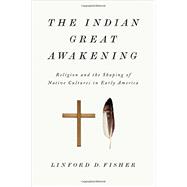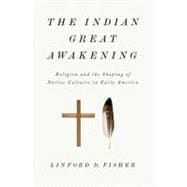The Indian Great Awakening Religion and the Shaping of Native Cultures in Early America

The Indian Great Awakening Religion and the Shaping of Native Cultures in Early America
- ISBN 13:
9780199376445
- ISBN 10:
0199376441
- Edition: Reprint
- Format: Paperback
- Copyright: 04/07/2014
- Publisher: Oxford University Press
.svg) Rent
From $27.23
Rent
From $27.23
List Price $45.85 Save
| TERM | PRICE | DUE |
|---|---|---|



List Price $45.85 Save $10.35
Usually Ships in 24-48 Hours
We Buy This Book Back!
Free Shipping On Every Order
List Price $45.85 Save $0.46
Usually Ships in 3-5 Business Days
We Buy This Book Back!
Free Shipping On Every Order
Note: Supplemental materials are not guaranteed with Rental or Used book purchases.
Extend or Purchase Your Rental at Any Time
Need to keep your rental past your due date? At any time before your due date you can extend or purchase your rental through your account.
Summary
While Indian involvement in the Great Awakening has often been seen as total and complete conversion, Fisher's analysis of church records, court documents, and correspondence reveals a more complex reality. Placing the Awakening in context of land loss and the ongoing struggle for cultural autonomy in the eighteenth century casts it as another step in the ongoing, tentative engagement of native peoples with Christian ideas and institutions in the colonial world. Charting this untold story of the Great Awakening and the resultant rise of an Indian Separatism and its effects on Indian cultures as a whole, this gracefully written book challenges long-held notions about religion and Native-Anglo-American interaction







